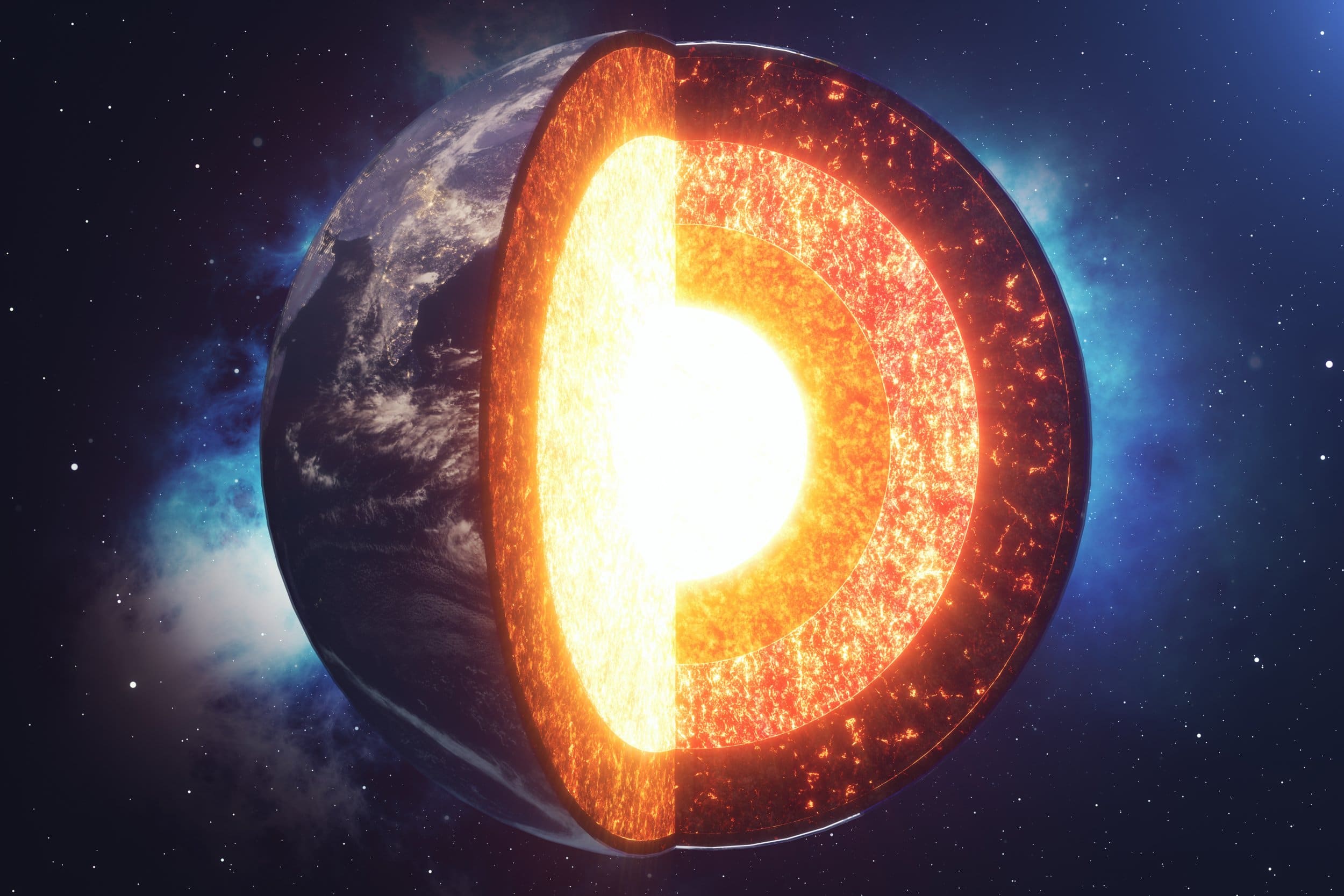1.3K
What the Earth’s core is made of – spherical layers. Inside are the heavy materials, further out are the lighter materials. But there are other material compositions and it is also interesting to know how the researchers know the structure.
What the Earth’s core is made of
The Earth’s core is about 3,480 km in diameter and consists of two layers: The inner core and the outer core.
- The outer core is about 2,260 kilometres in diameter and about 5,000 degrees hot. It consists of 90 per cent liquid metal, iron and nickel to be precise.
- The inner core has a diameter of about 1,220 kilometres. It is about 6,000 degrees hot and also consists of 90 per cent iron and nickel, which is solid rather than liquid.
- The reason for this is the pressure of the other layers of the earth, which weigh on the inner core and compress it so much that its material cannot liquefy.
- What the remaining ten per cent of the Earth’s core is made of has not yet been definitively determined. However, based on the research of a Japanese research team, science suspects that the third element could be silicon.
- French research, on the other hand, suggests that the third element could be oxygen.
How researchers know the structure
Due to the extreme conditions, it is not possible to penetrate the interior of the earth. The deepest borehole is only 12 kilometres long and barely reaches the border of the Earth’s upper mantle. Nevertheless, there are reliable scientific findings about the structure and material composition of the Earth’s interior.
- The research basis for this is earthquakes.
- Seismographs, devices that can register earthquake waves, are located at various locations all over the earth’s surface.
- The registered waves have previously passed through the different layers of the earth and accordingly carry information about these layers.
- Thanks to this information, we now know that the Earth has a two-layer core, a two-layer mantle and a crust.
